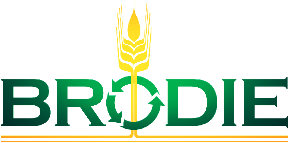“Is animal welfare better on smaller dairy farms? Evidence from 3,805 dairy farms in Germany.” Journal of Dairy Science Vol. 105 No. 11, 2022. This review, from German researchers, addresses the criticism often heard regarding large farms and how they supposedly have a negative effect on animal welfare. They investigated 3,085 German dairy farms, for a total of 376,415 dairy cows, that resembled the diverse structures of dairy farming in Germany and covered a wide range of dairy farm sizes (seven to 2,900 cows per farm, with an average of 122 cows). To evaluate the farms, they developed an animal welfare index (AWI) in close consultation with experts (farm animal welfare scientists, farmers and dairy representatives).
The authors provide some background information indicating that the European agricultural sector is undergoing continuous structural change towards increasing concentration of production in fewer, larger and more specialized farms. They provide the example of Germany, which is the fourth-largest milk producer in the world, where the mean number of dairy cows per farm increased from 31 cows per farm in 1999 to 70 cows per farm in 2021, an increase of more than 100% in the last two decades. They also refer that it is assumed that the structural change will continue and that the main driving forces include not only scientific and technological developments and the need to increase total factor productivity but also the additional requirements for livestock farming (such as food safety, environmental requirements and animal welfare), which have largely a fixed cost character for farms and have steadily increased in recent years.
On the other hand, they say the issue of animal welfare in agriculture is receiving increasing attention from European citizens, who want more information on the conditions in which farm animals are kept. They give the example of the label program “For more animal welfare” of the German Animal Welfare Association that sets a maximum farm size of 600 cows per farm for participating dairy farms and say that most likely farm size restrictions are introduced because it is often assumed, in public discussion, that there is a negative link between farm or herd size and animal welfare. Still, they add, farmers on the other hand seem to see no relationship between farm size and animal welfare, and recent scientific research reveals inconclusive results regarding a relationship between animal welfare and farm size.
The study used data collected as part of a nationwide dairy sustainability project involving more than 30 German dairies (processors), which represent more than a quarter of all processors in Germany. They developed a questionnaire that covered all dimensions of sustainability, including economic, ecological and social issues, as well as aspects of animal welfare. Data was collected between June 2017 and April 2020. The sample included mainly conventional full-time farms (98%, 2% were organic). The average dairy farm had 141 hectares of agricultural land, and the average dairy farmer age was 47 years old. Mean milk yield was 8,810 kilograms per cow per year. In total, 49 experts participated in the development of the welfare indicators used and their assessment, for a total of 46 animal welfare indicators available for analysis.
The study concluded that larger farms tended to achieve a higher AWI than smaller farms, but the effect size was very small. Nevertheless, contrary to the assumption in public discourse, larger dairy herds were not necessarily associated with poorer animal welfare. The authors say that in all herd size classes, they found a large variation of AWI between herds and thus potential for better animal welfare on small, medium-sized and large dairy farms. The results, they say, strengthen the evidence that herd size has little, if any, effect on farm-specific animal welfare levels. Therefore, when animal welfare is discussed in public and in politics, the emphasis should be on implementing animal welfare measures on farms, with less focus on herd size or politically enforced herd size restrictions.
“Evaluating the effectiveness of colostrum as a therapy for diarrhea in preweaned calves.” Journal of Dairy Science Vol. 105 No. 12, 2022. The objective of this study by researchers from the University of Guelph and Kentucky was to evaluate the effects of feeding spray-dried maternal-derived bovine colostrum replacer at the onset of diarrhea on calf growth and duration and severity of the disease in preweaning dairy calves. The authors provide some background for this study indicating that diarrhea is the primary cause of morbidity and mortality in dairy calves and that many cases of diarrhea are treated with antimicrobials, increasing the risk of antimicrobial resistance, therefore creating a need for alternative therapies.
The study was done at a calf-raising facility in southern Ontario. Calves (108 male Holstein dairy calves) were scored for fecal consistency twice daily, on a scale of 0 to 3 and enrolled into the trial when they had two consecutive fecal scores of 2 (runny or spreads readily) or one fecal score of 3 (liquid consistency, splatters). Calves were then allocated randomly to receive one of the following three treatments:
- Control (CON), which was eight feedings over four days of 2.5 litres of milk replacer (26% crude protein and 17% fat)
- Short-term colostrum supplementation (STC), which was four feedings over the first two days of 2.5 litres of a mixture of milk replacer and bovine colostrum replacer (26% IgG and 14.5% fat) followed by four feedings over two days of 2.5 litres milk replacer
- Long-term colostrum supplementation (LTC), which was eight feedings over four days of 2.5 litres of a mixture of milk replacer and bovine colostrum replacer
Calf serum IgG was evaluated at arrival to the facility, and bodyweight, days to enrollment since facility arrival and severity of diarrhea were recorded at enrollment.
The authors explain that diarrhea has been reported to cause 56% of the disease and 32% of the deaths in preweaning dairy calves. It poses significant welfare and health concerns, such as dehydration, anorexia, reduced immune function and death, as well as reduced levels of growth and an increased risk of developing respiratory disease. In addition, diarrhea in preweaning calves can result in long-term economic and production consequences such as poorer reproduction and lower levels of milk production in their first lactation.
Another important aspect, they say, beyond consequences surrounding productivity, is the concern surrounding the overuse of antimicrobials in cases of diarrhea. Exposure to antimicrobials in early life can also lead to long-lasting immunocompromising effects due to alterations to the gut microbiota, resulting in dysfunction of the gastrointestinal tract. Finally, the heavy reliance on antimicrobials can lead to the development of resistant pathogens, such as strains of salmonella and Escherichia coli. Bovine colostrum, on the other hand, can be a potential therapy for diarrhea and alternative to antimicrobials.
The authors explain that both colostrum and spray-dried colostrum replacer contain high concentrations of bioactive factors (i.e., antibodies, hormones, growth factors, oligosaccharides and fatty acids) and nutrients tailored to optimize calf health and immunity. Recently, the use of colostrum in calves has been explored beyond the first feeding after calving, and many advantages have been identified. Specifically, these experiments suggest there may be benefits to using bovine colostrum as a prophylactic to prevent diarrhea in calves by feeding colostrum after the first day of life.
The study concluded that supplementation of eight feedings over four days of 2.5 litres of a mixture of milk replacer and bovine colostrum replacer compared with eight feedings over four days of 2.5 litres of milk replacer was determined to resolve diarrhea sooner and improve growth levels in young dairy calves. This may provide lifelong benefits for calves diagnosed with diarrhea in the preweaning period.
Still, the authors alert that due to the preliminary nature of this research, future studies are necessary to determine the most practical and effective dose and duration of the therapy. Namely, they say that the optimal dose, duration and timing for this therapy is still unknown, and therefore future research should further explore these variables. They conclude by saying that improving practicality and economic considerations while upholding the efficacy of the therapy, bovine colostrum could become a favoured therapeutic for diarrhea in preweaning calves.










